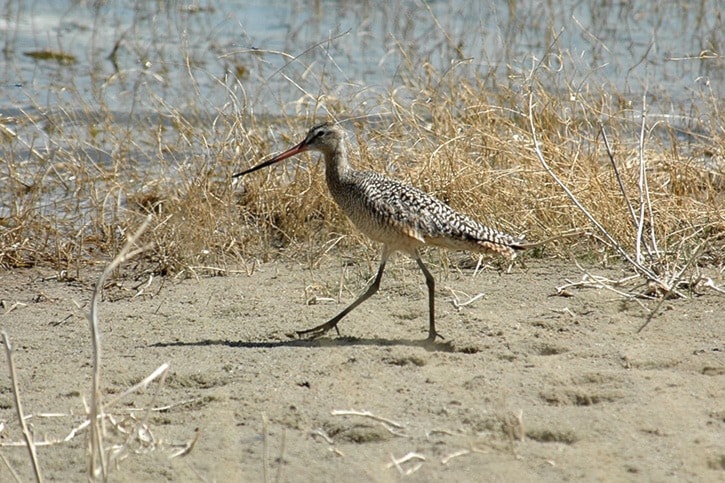The distance travelled by birds during a typical migration varies considerably. Some may migrate as little as a few hundred metres as they move from mountain slopes to valley bottom. Others may travel 15,000 km or more.
The champion long-distance migrant must surely be the Arctic Tern. This small, slender, gull-like bird breeds in the Arctic and winters in the Antarctic. The population breeding in the western Canadian Arctic takes a fairly direct route to Antarctica, flying more-or-less due south off the west coast of North and South America. Those breeding in more easterly regions, however, follow a much longer and more complicated route. The trip begins with an easterly flight to the west coast of Greenland, then around the southern tip of Greenland and east to the west coast of Europe. From there they follow the coast of Europe and Africa to reach the southern ocean where they disperse east and west along the Antarctic coast.
Why such a roundabout route? Arctic Terns have rather specific food requirements. The small marine creature on which they subsist are restricted to cold water. The very warm Gulf Stream current flowing up the east coast of North America makes it necessary for these birds to cross the Atlantic where they find water cold enough to support suitable food items. The one-way trip takes three months and for some individuals, the return trip covers 40,000 km.
While no other birds can match the total distance travelled by Arctic Terns, the story of the Bar-tailed Godwit’s migration is even more remarkable. A few years ago a team of scientists developed a lightweight satellite tracking device that could be safely attached to smaller birds. Several godwits in western Alaska were fitted with these devices prior to their southward migration in the fall. What the data revealed was that these birds flew to islands off New Zealand for the winter.
This fact was not the surprise, since this was already known. The big surprise was that the birds made this 11,000 km flight nonstop. These birds flew without rest, without sleep and without food for eight days to reach their destination (the photo shown here is the closely related Marbled Godwit).
Overwater, nonstop flights are not unknown, but the time and distance required to make the godwit journey is unprecedented. Many east coast migrants fly nonstop from the New England coast to the northeast coast of South America, a distance of over 3,000 km. Even though this is an over water route, it is taken by millions of land birds every fall. It is believed that the favourable winds are responsible for making this route attractive to so many birds.
Large numbers of many species will wait in coastal areas until weather conditions are suitable. When the time is right, huge flocks leave land and head out over the ocean under the cover of darkness. Even the diminutive hummingbird is capable of impressive nonstop journeys. They are known to cross the Gulf of Mexico, a distance of up to 1,000 km.
Prior to embarking on long flights, birds must build up their fat reserves. This fat serves as the fuel for the journey, and the amount of fuel on board determines the length of journey. If flying over land, running out of fuel is not necessarily a serious problem, they can come down and feed for a few days, but it is a matter of life and death for land birds flying over oceans. If a flock encounters adverse weather they may run out of fuel before they reach land. When this happens thousands of emaciated birds sometimes wash up on shore.
